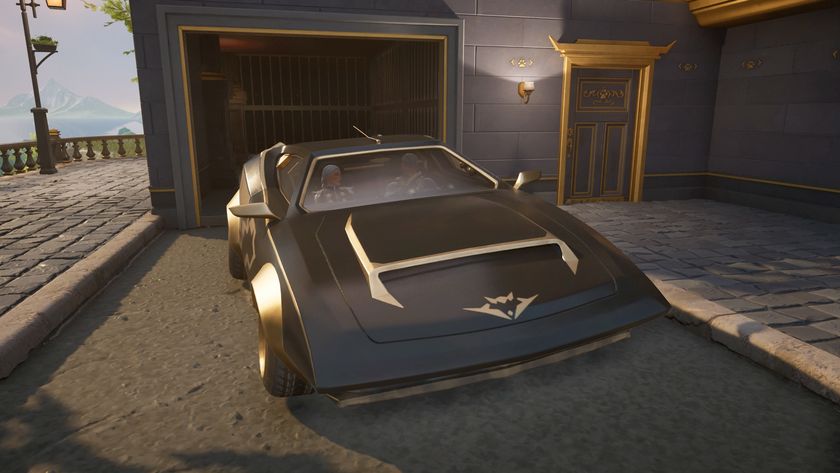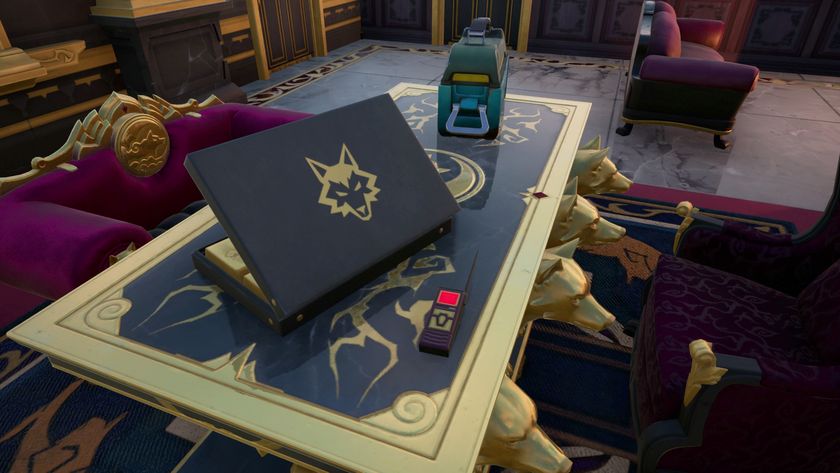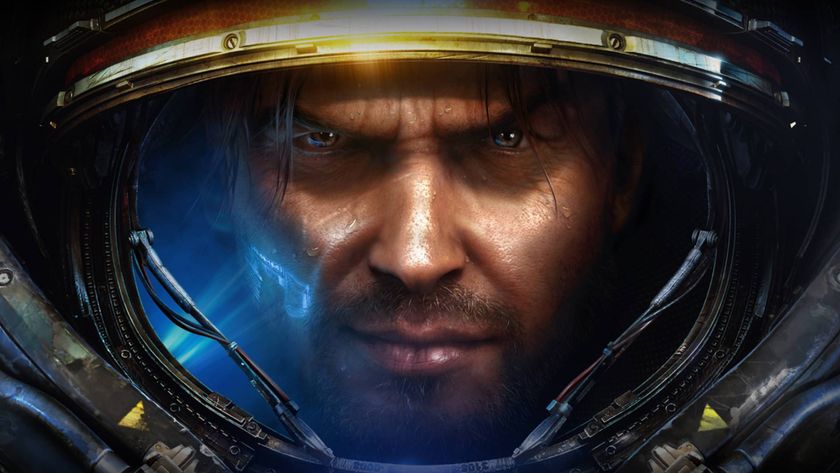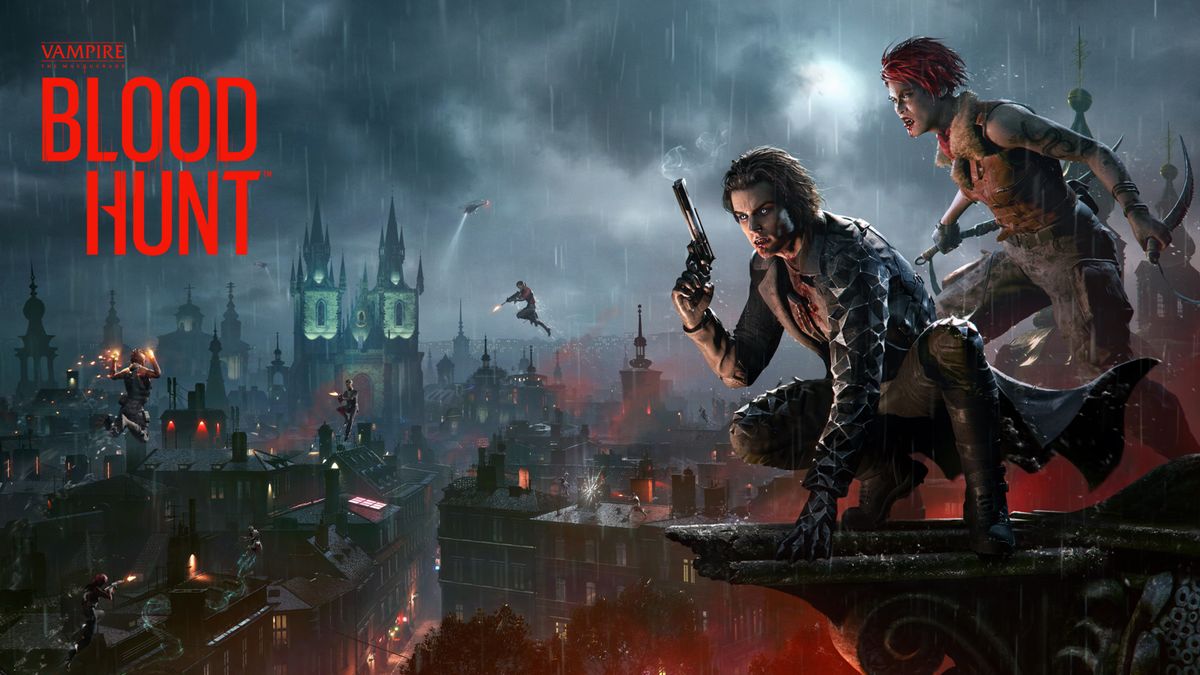
In the most absolute sense, battle royale is the survival of the fittest. Not only for the players who fight so fiercely over contested territory in constricting battlegrounds, but for the developers responsible for building those spaces too. When PUBG entered Early Access in 2017, it changed the composition of modern shooters forever. In the aftermath, industry leaders like Activision, EA, and Epic have invested heavily, propelling the genre to impossible heights and have left little breathing room for others to enter the fray.
It's this hyper-competitive environment which Sharkmob will enter on April 27 with the release of its debut game for PC and PS5, Vampire: The Masquerade – Bloodhunt. Carving out a space between Apex Legends, Fortnite, and Warzone won't be easy – something the studio is acutely aware of. But as IP director Martin Hultberg tells it, Sharkmob is ready to bare its fangs and show the world what it can do. "Anything in life worth doing, is worth overdoing. Moderation is for cowards."
AAA ambitions

Moderation is for cowards. That's a massive statement of intent which could easily masquerade as the studio's mission statement. Sharkmob was formed in 2017, founded by five of the principal architects behind Tom Clancy's The Division. The studio was supposed to be an independent outfit that would release experimental action-packed, online experiences. Fast-forward five years, and Sharkmob's ambitions have outgrown its humble origins; it was acquired by Tencent in 2019, has studios located in Malmo and London, and has over 200 developers working across three projects – Bloodhunt, and two unannounced new IPs being built using Unreal Engine 5. Studio co-founder Anders Holmquist tells me that his fellow founders joke that Sharkmob was "the world's worst indie studio."
That attitude – informed by a confluence of ambitious AAA standards and practices – is pervasive throughout the Malmo HQ, staffed by industry veterans and developers fresh out of local universities. I visited the studio anticipating carnage, just six days out from the launch of Sharkmob's free-to-play, third-person battle royale set in the world of Vampire: The Masquerade. Instead, I found teams calmly working through final preparations – checking systems and servers ahead of an anticipated swarm of day one players, all while other groups of developers sequestered themselves to lock down content for upcoming battle pass seasons.
"I'm a little nervous," admits Holmquist, Sharkmob's chief technical officer and the former technical director of The Division. "There's always something, that one last thing that breaks everything. But," he pauses, leaning forwards to knock his fist against the base of a wooden desk, "it's looking okay. We just got the submission pass from Sony on the day one patch, so that was quite nice."
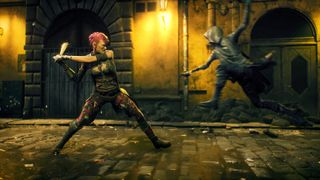
I can understand why the Bloodhunt leadership would be a little nervous. Not only is launching a live service shooter an inherently stressful activity, but Sharkmob is about to learn whether it was right to strive for such an ambitious design with a new, untested team. "It's been quite a ride," says CEO Fredrik Rundqvist, who previously served as the executive producer on The Division and COO of Massive Entertainment. "We're in our fifth year as a company. The first two were us assembling IKEA desks, downloading Unreal for the first time, and then just trying things out. But the last three years have been very intense, and I'm super proud of what the team has accomplished."
"In six days, Bloodhunt is going to be out there," Hultberg adds, "and there's no turning back now." As you're reading this, those six days have turned into just 24 hours. Bloodhunt has gone gold, and it won't be long before you can try it yourself. It won't be long before you're sinking your teeth into Bloodhunt's unrestricted movement mechanics and deep character creation. Before you're getting a handle on Bloodhunt's combat, which walks a tightrope to find a balance between ranged engagements, melee action, and dazzling supernatural abilities. Before you drop into Bloodhunt's hyper-detailed urban playground, which Sharkmob believes may be the "most detailed PvP map ever created."
Sign up to the GamesRadar+ Newsletter
Weekly digests, tales from the communities you love, and more
Exploring Prague
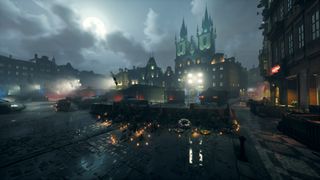
It's a bold claim that is impossible to fact check, but it feels as if it could be grounded in some type of reality. Bloodhunt is launching with one sprawling map, set in a faithful recreation of the Old Town district of Prague, and an adjacent social space dubbed the Elysium – a neutral ground (and social space, which will evolve between battle pass seasons) where vampires can gather between games without fear of harm, located in a chamber beneath Prague Castle.
As fantastic as Bloodhunt is to play, and for all of the playstyle variations on offer between its seven customizable 'Archetype' classes, the game's ambition and achievement really shine through in its stunning depiction of Prague. Should you visit the city in real life, it transforms into a gothic fairytale come nightfall, making it the perfect hunting ground for a vampiric battle royale. Now that's a discovery Sharkmob probably wishes it could forget. "It was a nightmare," says Hultberg. "Like, coders and artists were fighting in the streets of Malmo about how to build this city."
It's easy to see how philosophical fights could have spilled outside the studio's doors. There's a palpable sense of tension between the artistic and programming divisions, with the former striving for a cityscape with a density of detail that can rival The Division's New York and the latter desperately trying to deliver a stable 60fps experience. "We're nerdy about fidelity. We want to make the game as beautiful as we can… but obviously, it also needs to run. It's the tech people's nightmare," says one Sharkmob designer with a smile, "they love Rodrigo!"
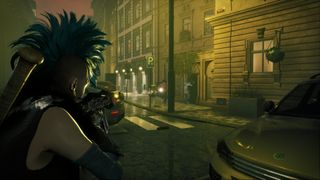
"Nobody loves Rodrigo," retorts Rodrigo Cortes, laughing alongside his fellow founders. Cortes is Sharkmob's art director, previously working as the brand art director for The Division and the Snowdrop Engine. "We had a lot of knowledge on how to build big open-world cities and that helped us a lot in creating Bloodhunt… But creating Prague was a huge undertaking. We had a small team with huge ambitions; Prague is a really cool city but very difficult to create."
Where New York is structured as blocks of buildings separated by straight roads, Prague is a different beast entirely. "There are basically no straight lines anywhere, the streets bend and twist, there are a lot of detailed and ornate buildings, and they all have different heights and unique looks," says Cortes, although this wasn't the only complication. "Another big difference was that The Division was mostly a street-level game while the Vampires of Bloodhunt can move everywhere: every roof, every terrace."
Holmquist says that being able to scale any structure was a part of the earliest proof-of-concept demos for Bloodhunt, back when he was the only programmer on the project. "You could only climb where there were drain pipes. That was where we started and we kind of built from there," he says. "Frederick usually jokes that I said, 'No, it's impossible to climb everywhere; it's going to be way too much work to make sure that it works.' And then he says that Anders came a week later, and it was working."
That's an exaggeration which speaks to the spirit behind the project. If there were problems in those early years, small teams were working to find big, transformative solutions. "I think that was one of the things that made Sharkmob work from the start. We were five people with very different areas that we were responsible for, sometimes disagreeing quite harshly. But we could always reach a consensus. And I think that the ability to find the way forward has really shaped the company," says Holmquist.
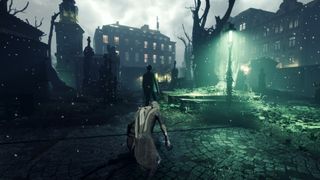
"The end result speaks for itself, I think. Prague has to be one of the most detailed multiplayer maps ever made"
Rodrigo Cortes, art director
With Cortes pushing to create "the most visually stunning F2P multiplayer game out there", with what he believes is "one of the most detailed multiplayer maps ever made", Sharkmob had to get creative. The studio took two trips to Prague, using photogrammetry to scan the city's statues and architecture into Unreal Engine 4 to better assist in their recreation in-game. The capacity to climb every building at any time better supported the vampire fantasy at the core of Bloodhunt, but it came at the cost of Sharkmob being able to load the map all at once, forcing the team to find creative ways to stream parts of the city in and out as you move through it at dizzying speeds.
Where battle royale maps are traditionally a balance between open terrain and contained settlements, rather than fully-rendered cityscapes, Sharkmob has had to use stark color-grading (inspired by the artistic direction of John Wick) to help players discern their locations and communicate with one another. These are just a selection of the stories I heard about the Prague map, but I think you get the idea by now. "We could have made a simpler game, but rich visuals and a stunning presentation is what Sharkmob stands for, and what we want our consumers to know us for," says Cortes.
Fierce competition

The truth is, the Prague map is likely to be the element which helps set Bloodhunt apart from the pack in its earliest days – as Sharkmob solidifies its live service and begins working with the community forming around the game following a successful Early Access period. You've never played in a battle royale space quite like it; the design of the city naturally fosters faster engagements and quicker cycles of life and death. It looks absolutely stunning on PC and PS5 too, and it's easy to lose yourself in the density of its scale and detail – the sound of distant gunfire echoing through the streets is a constant reminder that death awaits at every turn.
"That's one of the reasons we decided to support Dolby Atmos and Tempest 3D audio on PS5," says audio director Simon Holm List. "Bloodhunt is all about the verticality of the city. So you need to be able to pinpoint whether someone is shooting beside you, or if a player is actually on the rooftops or beneath you."
I ask Holmquist about the push and pull between the art and technical sides of Sharkmob, ambition versus reality, and he says something that I think is telling about the studio's approach and what it is up against: "You're trying to explain that maybe we're a bit smaller right now, and we maybe don't have the resources – but the ambition is still there. I think it's very hard for us to say 'stop, this is good enough', so we just keep pushing. I'm not sure how, to be honest, but we know we have to be this good, so it's a question of 'how do we get there?'"
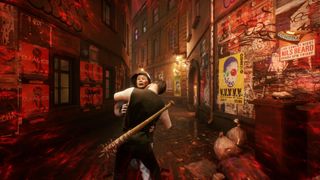
Sharkmob knows it has to be "this good" because the battle royale market is immensely competitive. When work began on Bloodhunt, the future of the genre wasn't so certain. Sharkmob has seen it grow from an ARMA II mod to a domineering presence in the shooter scene to an honest-to-god cultural phenomenon. That success generates pressure.
"To be honest, we didn't think the battle royale could be as big as it is today," says Rundqvist, who explains that the team picked the genre for Bloodhunt because it had ignited their imaginations back in 2017. "Obviously, it's very difficult to compete with the top-line games in terms of the number of players and such. What I do think we can offer here is something that's quite different. In style, tone, maturity, and in slightly more advanced characters. So hopefully, if you're a battle royale fan, and you've been playing one or two games for a very long time, maybe you want to try something new."
Hultberg puts a point on this pressure. Every time a battle royale evolves, he explains, player expectations evolve in tandem. "You're basically going from 'look, there's a rising potential we could jump on', to 'oh shit, we missed the train.' Now it's the biggest genre on the market – we went through that journey, and it's pretty awesome to see. But when you release a game, you are never compared to the original games in that genre, you're always compared to what's there right now. So we have a bunch of competitor games that have gone through multiple seasons, multiple cycles – they've learned a lot, and they have a lot of content, so we're competing with that. We're not competing with what they were when they were released. We are competing with what they are now. So that's like the scariest thing with it."
Vampire: The Masquerade – Bloodhunt doesn't have the vast foundation of content and iteration that titles like Apex Legends, Fortnite, PUBG, and Warzone have after years of investment, but maybe that isn't the worst thing in the world. The battle royale genre has spent five years evolving and domineering, but there is definitely space for something new. For something that brings the focus back onto combat and movement, and away from crossover events and live service spectacle that typically grabs headlines. With Vampire: The Masquerade – Bloodhunt launching on April 27, we won't have to wait long to see whether Sharkmob is fit enough to survive this battle.
Vampire: The Masquerade – Bloodhunt launches April 27, 2022, on PC and PS5 with cross-play support between the two platforms.

Josh West is the Editor-in-Chief of GamesRadar+. He has over 15 years experience in online and print journalism, and holds a BA (Hons) in Journalism and Feature Writing. Prior to starting his current position, Josh has served as GR+'s Features Editor and Deputy Editor of games™ magazine, and has freelanced for numerous publications including 3D Artist, Edge magazine, iCreate, Metal Hammer, Play, Retro Gamer, and SFX. Additionally, he has appeared on the BBC and ITV to provide expert comment, written for Scholastic books, edited a book for Hachette, and worked as the Assistant Producer of the Future Games Show. In his spare time, Josh likes to play bass guitar and video games. Years ago, he was in a few movies and TV shows that you've definitely seen but will never be able to spot him in.
